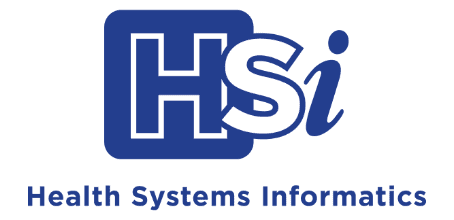MEETING THE CHALLENGE OF REGULATORY DATA IN INFECTION CONTROL REPORTING
The Challenge
Reduction of patient healthcare-associated infections (HAIs) requires constant vigilance and surveillance. The ability to streamline surveillance is critical to identifying infections in near real-time while increasing the time available for preventing future infection. Following a new EHR implementation, one hospital system determined replacement and new infection control reports to be lacking. The Infection Control Department users found manual individual patient case reporting, chart review, and population denominator data review to be increasingly challenging without readily available data to streamline the process. Each required report scenario was unique with variable metrics, parameters, calculations, and programming code. Infection control reporting needs of vital importance were recognized for patients on mechanical ventilation who are particularly vulnerable to complications (Ventilator-Associated Events or VAEs) in addition to the Central Line-Associated Bloodstream Infection (CLABSI), Catheter-Associated Urinary Tract Infection (CAUTI), and Surgical Site Infection (SSI) reports.
The Solution
HSi provided a Senior Healthcare Technical Consultant to work with the client’s Epidemiologists and Infection Preventionist. The resulting partnership led to the generation of the complicated population-level data queries and obtaining the denominators necessary for mandatory infection control reporting (e.g., central line days, indwelling urinary catheter days, patient days, ventilator days, and more) being identified, coded, and developed in an easily readable and malleable Excel format. Extensive testing and validation of the reports was undertaken by the business owners to assure accuracy of data.
The CLABSI and CAUTI reports identified each central line or indwelling urinary catheter as a separate device then used each device to determine whether relevant microbiology data fell within specified National Healthcare Safety Network (NHSN) time frames. A second report was designed to identify whether criteria, such as organism colony count, was met. Also, the central line reports included multi-line scenarios resulting in the necessity of creating a composite timeline to represent the variables associated with each line. SSI reports were broken into two phases, the first to create the OR SSI Report as the client already had the capability of generating some necessary information. The second phase provided enterprise-wide alignment of infection control workflows and data needed due to the additional hospitals involved in the implementation and the necessity to accomplish the desired population-level reporting.
Each report’s specifications were driven by NHSN requirements, but also by the customization needed by the client. For example, logic statements were established and documented for categories needed to further define the VAE specifications. As a result, in addition to providing individual Unit Summaries of Vent Counts, Vent Days, Census Vent Days, BAC Counts, IVAC Counts, and Probable Vent Patient Numeric Totals, the VAE Summary Report contained 16 additional fields of detailed data.
The Benefit
The HSi/client collaboration generated detailed specifications with the resultant coding and deployment of nine reports (plus an additional seven VAE report modes for user selection) needed to meet the client’s reporting requirements. An improved workflow to identify possible surgical site infections is now in place for both a small subset of procedures required for regulatory reporting, as well as for additional procedure groups, increasing productivity. The new reports helped standardize surveillance across all client hospitals and made CAUTI surveillance more efficient by allowing the Infection Preventionist to focus efforts toward a more specific patient population.
To emphasize the importance of the data now generated, the CLABSI and other report data is shared with CMS to determine Medicare payments under both the Hospital Value-Based Purchasing Program and the Hospital Acquired Conditions Reduction Program. The VAE, CLABSI, CAUTI, and SSI reports are utilized by Infection Preventionists to identify patients with HAIs for both mandatory reporting, as well as identifying trends in infection control-related process and outcome measures to help drive quality improvement initiatives.
Working as a cohesive team to manage the complexity of infection control reporting generated great dividends in producing the precise and accurate data required to meet facility, enterprise-wide, and external (e.g., CDC, CMS, etc.) reporting requirements.







